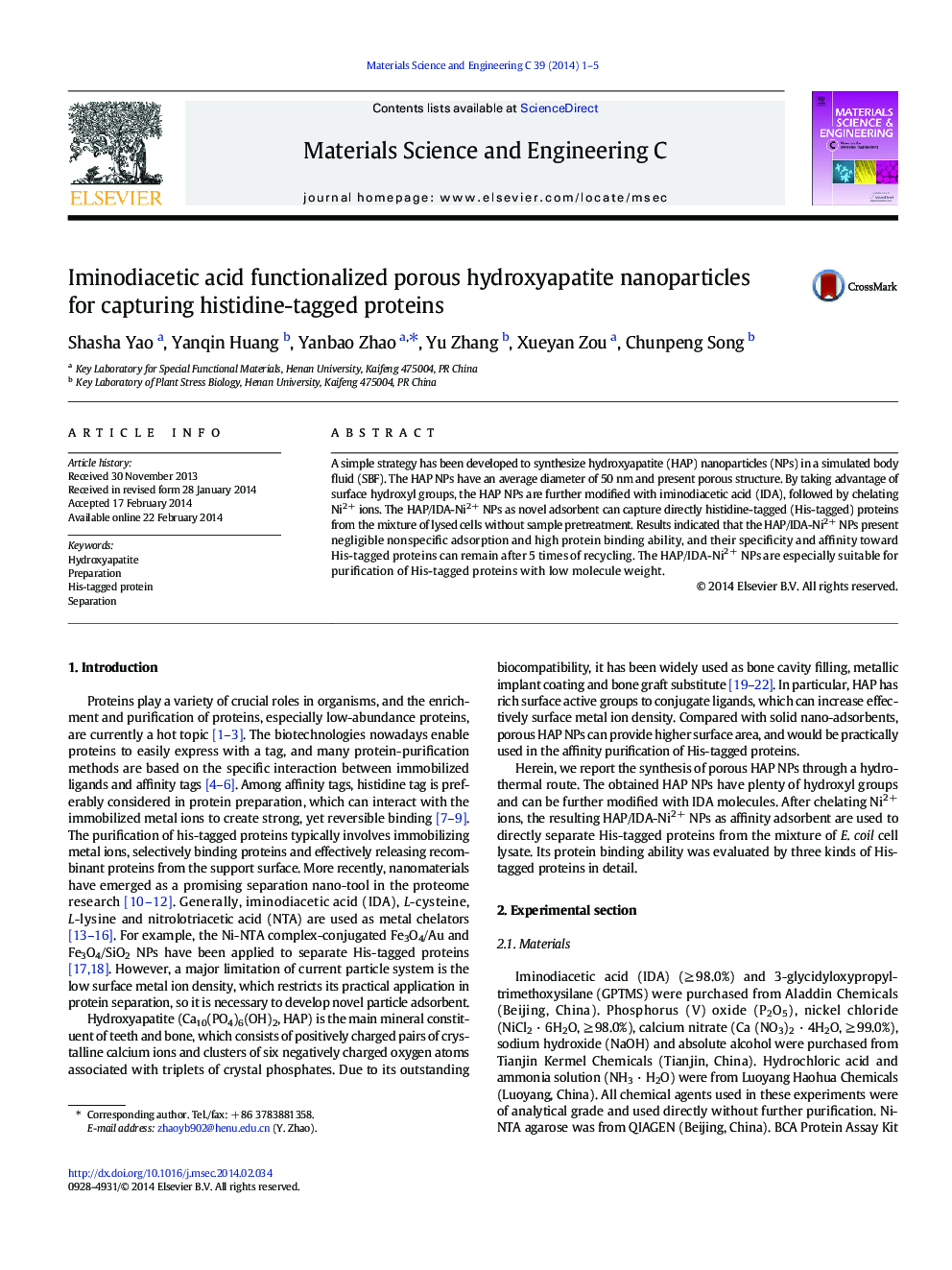| Article ID | Journal | Published Year | Pages | File Type |
|---|---|---|---|---|
| 1428754 | Materials Science and Engineering: C | 2014 | 5 Pages |
•Porous HAP NPs were prepared via a solvothermal route.•HAP NPs are modified with IDA, followed by chelating Ni2 + ions.•HAP/IDA-Ni2 + NPs can capture directly His-tagged proteins from the mixture of lysed cells.•HAP/IDA-Ni2 + NPs present negligible nonspecific adsorption and high protein binding ability.
A simple strategy has been developed to synthesize hydroxyapatite (HAP) nanoparticles (NPs) in a simulated body fluid (SBF). The HAP NPs have an average diameter of 50 nm and present porous structure. By taking advantage of surface hydroxyl groups, the HAP NPs are further modified with iminodiacetic acid (IDA), followed by chelating Ni2 + ions. The HAP/IDA-Ni2 + NPs as novel adsorbent can capture directly histidine-tagged (His-tagged) proteins from the mixture of lysed cells without sample pretreatment. Results indicated that the HAP/IDA-Ni2 + NPs present negligible nonspecific adsorption and high protein binding ability, and their specificity and affinity toward His-tagged proteins can remain after 5 times of recycling. The HAP/IDA-Ni2 + NPs are especially suitable for purification of His-tagged proteins with low molecule weight.
